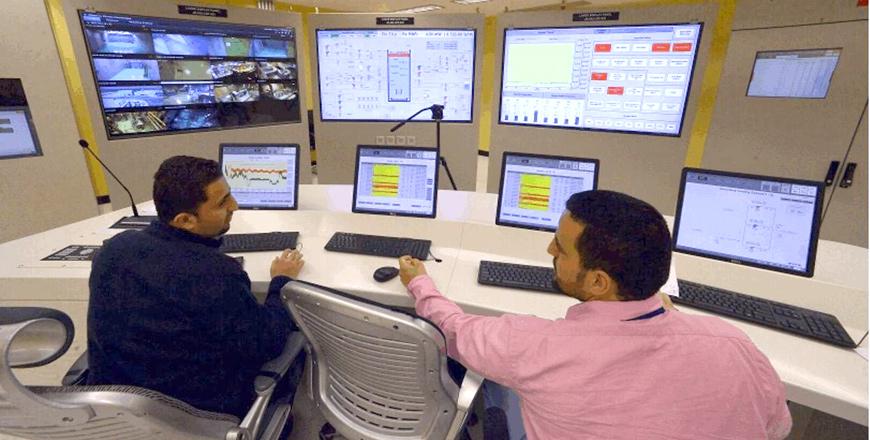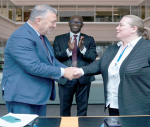You are here
RSS, SESAME sign MoU with ICTP to develop scientific capacity in Synchrotron Applications
By JT - Sep 14,2021 - Last updated at Sep 14,2021
AMMAN — The Royal Scientific Society (RSS), in partnership with the Synchrotron-light for Experimental Science and Applications in the Middle East (SESAME), on Tuesday virtually signed a memorandum of understanding with the Abdus Salam International Centre for Theoretical Physics (ICTP) to promote scientific research and education, training and communication in Jordan and the Middle East and North Africa (MENA) region.
The MoU was signed by RSS President HRH Princess Sumaya, SESAME Director Khaled Toukan and ICTP Director Atish Dabholkar.
The RSS said that the MoU sets a framework to develop the scientific capacity of Jordanian and MENA scientists interested in synchrotron physics, according to an RSS statement.
The MoU provides scholarships for students to work with experts at SESAME synchrotron in the Allan area in Salt and the Elettra synchrotron in Trieste, Italy.
The MoU aims to develop a group of SESAME users within the Jordanian and MENA scientific community.
The RSS is an independent, non-government, not-for-profit institution. It is Jordan’s scientific hub for international engagement and national scientific advice and the Kingdom’s leading support mechanism for technical guidance, policy, services and scientific research for development.
The RSS will create a partnership with researchers in Jordan and facilitate their training opportunities at SESAME and the ICTP.
Participation in the agreement will enhance the RSS’ strategic mission for supporting research at the frontiers of science, research facilitation, and building the scientific capacity of Jordanian researchers, read the statement.
Princess Sumaya expressed her happiness with the partnership between the ICTP and SESAME. She noted the shared mission between the three institutions to build scientific capacity and strengthen scientific research and collaboration.
“ICTP, since its establishment in 1964 by the late Nobel Laureate Abdus Salam has been providing scientists from developing countries with training and skills to advance their scientific careers,” the princess said.
SESAME has “fostered scientific and technological excellence in the Middle East by enabling world-class research that relies on SESAME facilities”, the princess said.
The RSS, with its accumulated expertise over 50 years, is recognised as the leading applied research institution, consultancy, and technical support service provider in Jordan, and is a regional leader in the fields of science and technology, she said.
“It seems very fitting that this partnership has been established, and I am really confident that we will soon reap its benefits, not only in Jordan but in the whole region”, the princess said.
Toukan expressed SESAME’s happiness to be a part of the MoU with the RSS and the ICTP. Toukan added that SESAME has collaborated with the ICTP since its early phases of establishment.
He also expressed gratitude to Princess Sumaya and Dabholkar for participating in this partnership that aims “to build bridges through scientific collaboration, which will enable partners to explore more areas of advanced research to benefit Jordan and the whole region”.
The RSS has signed a separate MoU with the ICTP, which focuses on knowledge sharing and scientific collaboration in the fields of Earth System Physics (ESP), High-Performance Computing (HPC) and climate modelling.
Dabholkar commended the collaboration between the RSS, SESAME, and the ICTP.
Dabholkar also expressed his thanks to Princess Sumaya and Toukan. He voiced his aspiration to strengthen collaboration and enhance the mission, expected to have a “lasting impact on science in the region”.
Related Articles
AMMAN — HRH Prince Hassan, founder and chairman of the Royal Scientific Society, met earlier this week with a high-level, technical delegati
AMMAN — On December 17, SESAME opened the doors of its Materials Science (MS) beamline to a team from the Royal Scientific Society (RSS) in
AMMAN — The Technical Cooperation Department of the International Atomic Energy Agency (IAEA) has recently reviewed success stories and achi



















